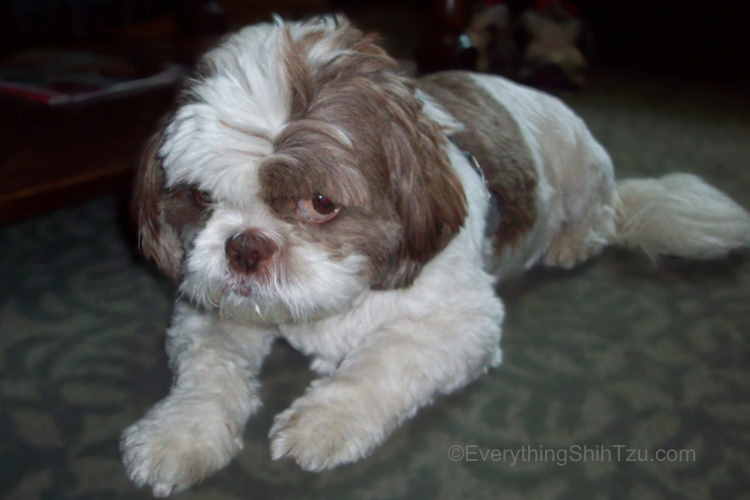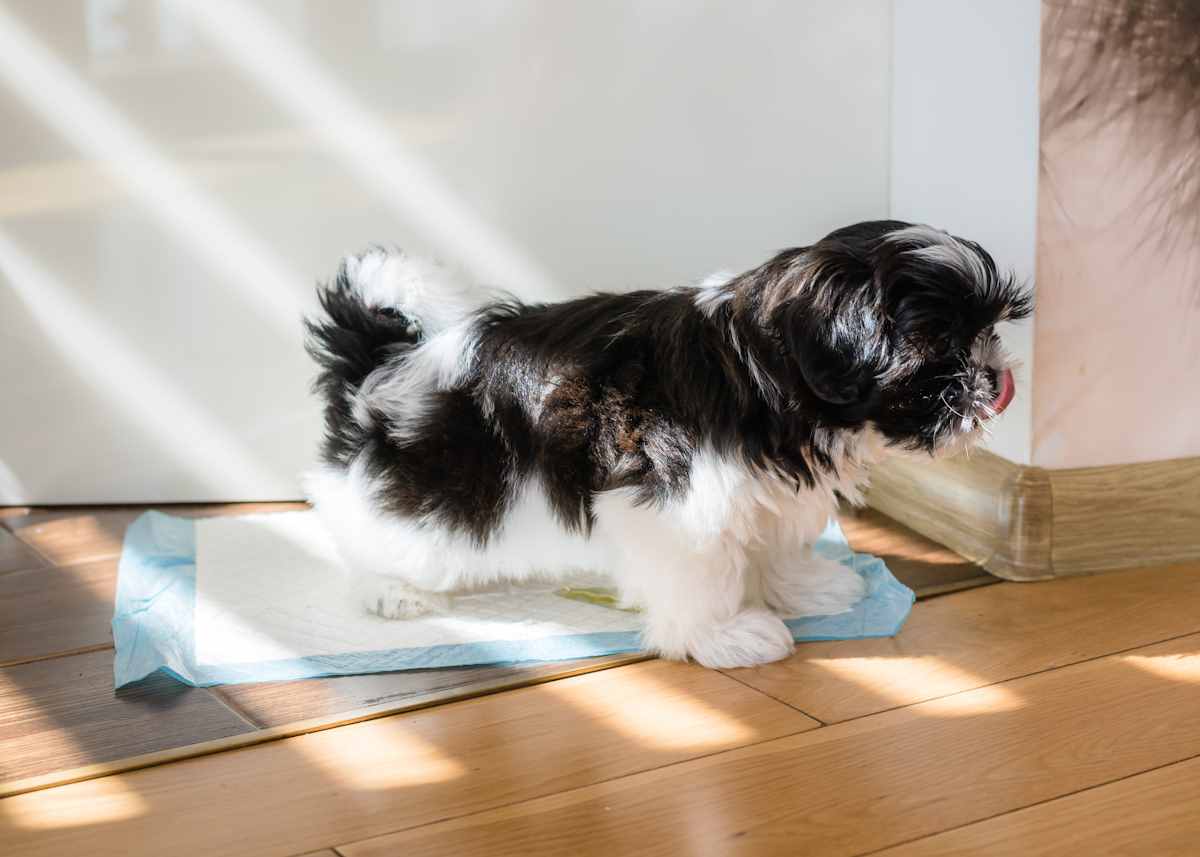Can a Camera Help with Your Dog's Separation Anxiety?
By Stacy, Everything Shih Tzu October 11, 2022
This post may contain affiliate links. Read privacy & disclosure policy for info
If your pup constantly cries and raises a fuss when you leave, there might be more to it then just the fact that she misses you.
If it’s just a whimper or two, that’s to be expected, especially of a new puppy.
However, if your absence sends your Shih Tzu into a frenzy and she constantly howls, scratches, chews up your belongings, and any number of other misbehaviors, you’re most likely dealing with separation anxiety.

This stressful issue can cause a lot of upset for both you and your dog.
Naturally you would try anything to help her, and one suggested tool for assisting with dog separation anxiety is using a camera.
If you opt to use a camera as a way to resolve your Shih Tzu's separation anxiety, you need to keep a few points in mind.
The ultimate goal of eliminating your pup’s separation anxiety should be to make him feel comfortable when he is on his own and less reliant on you.
While a camera might help ease some of his symptoms, it won’t necessarily get rid of separation anxiety.
It would best to determine your actual goals when it comes to working with your dog's anxiety issues.
Do you want him to stop chewing on the furniture when you're away, or do you want him to feel safer and happier?
These are two very different goals, and what you do to tackle the smaller problems won't necessarily take care of the larger picture.
If this is the case, should you even use a camera?
Why Use a Camera If Your Dog Has Separation Anxiety?
Before you can work with your pup on her separation issues, it’s important to determine if she is suffering from true separation anxiety or just some negative behavior issues.
For example, a dog that is exhibiting certain symptoms of separation anxiety, such as peeing on the floor or chewing on the furniture, might just be acting out for attention.
In this situation, some basic dog training, firm and consistent direction, and ample opportunities for exercise and play are probably enough to do the trick.
However, not all signs of separation anxiety are easy to spot, since your dog does a lot of them when you aren’t home.
A camera can definitely help you see what exactly your dog is up to while you are away, and help you identify any symptoms of true separation anxiety.
About 14% of dogs suffer with actual separation anxiety, and this condition needs to be addressed in a certain way.
Therefore, a camera is a great idea for being able to monitor your pup so you can get some answers and track her progress, but a camera is not likely to cure your pup of her anxiety.
Cameras with two-way talk features that enable you to communicate with your pup while you are gone, can actually end up having the opposite result of what you want them to do.
They serve to make your pup more dependent on you and actually don’t do anything to erase the anxiety itself.
This is why it is important to decide if you just want to address the symptoms or the actual condition.
What Are the Signs of Separation Anxiety?
Since it’s obviously hard to see if your dog is showing a lot of the signs of separation anxiety, consider setting up a camera for monitoring purposes.
Although some signs present themselves in the state of your dog’s environment; you return home to puddles of pee, chewed up baseboards, and a note from the neighbor saying your dog never stopped howling while you were at work, there are many other signals of separation anxiety that you would never know your dog was sending since you’re not home when they happen.
Here are some common signs of separation anxiety that you should look out for when you’re watching that camera footage:
- Your Shih Tzu is having multiple accidents inside of the house.
- Your dog eats her own poop.
- Your dog continuously barks or whines while you are not at home.
- Your things are destroyed; your pup is chewing, scratching, biting and tearing up furniture, curtains, and anything else she can get her paws on.
- Your pup cannot stay still, she constantly paces and walks around.
- Your dog drools more than normal.
- Your pup doesn’t want to drink or eat anything unless you are home.
- Your dog is hurting herself, either by scratching or biting herself or chewing on her paws and nails.
How Do You Ease Your Dog’s Separation Anxiety?
While a camera might help your pup feel more comfortable in the short-term, remember, the best thing for your dog is to help her feel confident, safe, and secure when she is on her own.
Focus on the camera as more of a tool to help you get the answers you need to appropriately address your pup’s issues.
You can also discuss a plan of action with your vet; just don’t let your pup’s anxiety go unchecked for too long.
Begin training your pup and setting the ground rules early and establish that you are the boss.
Of course, you want to play and cuddle your fluffy pup, but training and teaching your dog how to behave are extremely important to the overall success of your relationship.
Fully apply yourself to potty training your pup and teaching her basic obedience commands as soon as possible.
You can also start to condition her to be alone by utilizing the following practice:
- Step out of the room for just a few seconds, return, and reward your pup with praise and a tasty treat.
- Repeat the same step, but this time increase the amount of time that you stay out of the room.
- Next, leave the house through the front door, and return after one minute, then two, then five, and so on until you work your way up to an hour or so, and eventually a whole workday.
A dog loves to know what’s coming, it gives her a sense of control over her environment; this is why having a schedule is so important.
Incorporate adequate time for exercise, play, training, and other engaging activities so that your pup is properly stimulated.
When you aren’t home, leave her some interactive toys that can help keep her engaged.
Together, these practices will help your dog be calmer (and probably too tired to act up) while you’re gone.
If you notice that your pup starts to get worked up at certain times, or when you do certain things, pay close attention.
Your dog is giving you hints as to what her anxiety cues are.
For example, she starts to get nervous whenever you pick up your keys, or you put on your hat, or you make a cup of coffee because she knows that after you do these things you leave.
Once you have identified these cues, start to purposely do these actions, but then remain home and reward your pup.
This will help her start to associate these activities with positive feelings, and disassociate them from you leaving the house.
You can also help reduce your pup’s anxiety about you coming and going by keeping things calm during your exit and arrival, instead of turning them into a huge production.
Bottom line, a camera might be a great way to help you identify any problems and keep your pup calm in the short-term while you figure out your larger game plan.
However, if you really want to get rid of your pup’s separation anxiety, you need to deal with the root issue, and not rely on a camera to simply deal with the symptoms.
Remember, the ideal goal is to make your pup happy, healthy, confident, and secure.



